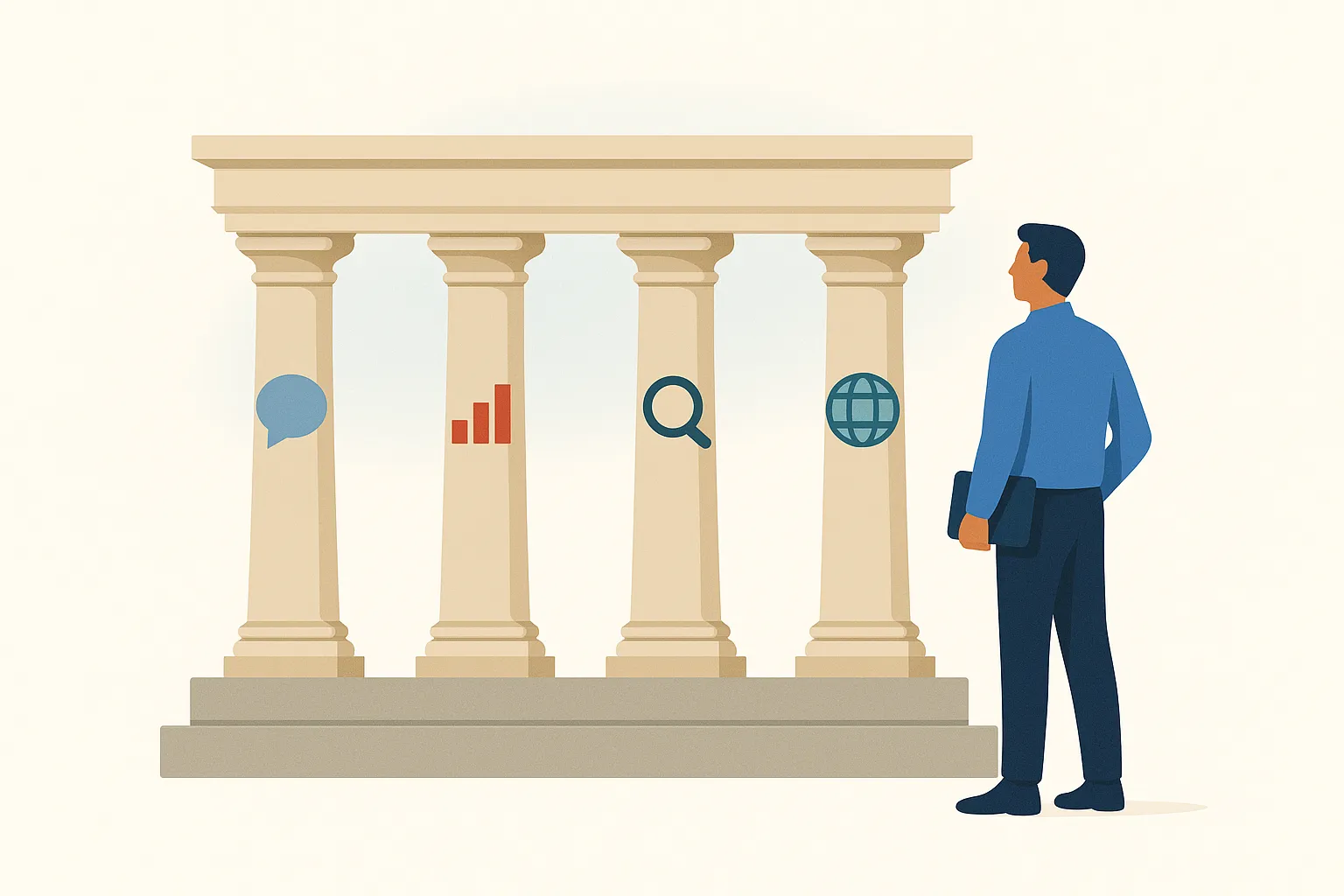TL;DR
- Share win-loss feedback directly with individuals and teams involved in deals
- Create a cross-functional task force to implement changes driven by win-loss analysis
- Incorporate win-loss insights into ongoing company initiatives
- Ensure leadership engagement, transparency, and consistency in sharing win-loss feedback
- Choose the right team, focus strategically, and ensure follow-through and accountability in implementing changes
We talk about actionable insights a lot at Clozd, and while we do our best to uncover insights in our interviews, we also know that insights are only valuable when they're in the hands of someone who can actually take action.
I’m going to outline a few examples of how to share win-loss insights internally in such a way that they can lead to strategic action.
Example #1: Send win-loss feedback directly to the individuals and teams that were involved in the deal
I work with a client who includes all the sales reps’ and sales managers’ email addresses in the deal data they send me. When I complete an interview for that client, every salesperson involved in the deal gets an email notification with the interview transcript that they can read through. They learn what went well, what could have been improved, why they won or lost the deal, and in some cases, how they should re-engage a prospect to potentially win back lost deals.
As someone on the email thread, I’ve seen conversations erupt giving praise to sales reps who did an excellent job helping prospects feel heard and valued. I’ve seen conversations acknowledging mistakes and vowing to do better in the future. I’ve seen conversations surface ideas of how to train other teams to better approach the sales process based on buyer feedback.
These email conversations directly lead to action within the sales organization. They’re successful for a few key reasons:
- Leadership engagement: These conversations are often started by a sales leader. When leaders are engaged in the development of their team, they crave win-loss feedback to both highlight positives and use negatives to coach their teams. If leaders aren’t involved, win-loss insights may remain siloed with individuals and not lead to broader change.
- Transparency and honesty: Win-loss feedback is viewed specifically as a tool that uncovers the truth of what happened in the deal, with the goal of helping everyone involved. Building a culture where people are open to honest feedback increases the likelihood that your teams will change for the better and take action that propels them forward. Defensiveness does not lead to change.
- Consistency: Some deals go well. Some don’t. Having access to consistent feedback from both won and lost opportunities enables continuous improvement. It also allows teams to track how they’re improving over time. It’s powerful for teams to get feedback, make changes, and see the results. Lasting change will happen with consistent tweaks over time.
Example #2: Create a cross-functional task force to implement changes driven by win-loss analysis
Win-loss feedback is applicable to every department within an organization. At Clozd, every employee has access to and regularly reads through our win-loss interviews and uses the feedback to improve in their specific role.
In some companies, however, only one department gets the bulk of the feedback, which limits the impact it can have on the company overall. I worked with one client who combated this potential siloing of information by creating a cross-departmental task force to consume win-loss feedback, determine and assign action items to the applicable departments and teams, and follow up accordingly.
Creating an effective cross-departmental task force that can implement change includes the following elements:
- Choosing the right team: An effective task force must include people who have enough seniority to ensure that their instructions are followed. However, people on the task force also need to have enough time to engage in the task force, determine action steps, and follow through on them. Having a senior member of the task force who doesn’t have time to meet and consistently cancels the meeting is just as ineffective as having an entry-level member of the task force who has great ideas and plenty of time to follow through but can’t get anyone to take them seriously.
- Strategic focus: An effective task force must be keyed into the executive team’s strategic focus as a business and be able to create action steps that help achieve that focus. While important in any organization, this becomes particularly important for large, enterprise organizations that have many different areas of focus. Being able to use win-loss feedback to enact change requires that the task force knows which changes are in line with the business’s vision and goals and which are not.
- Follow-through and accountability: The idea of a task force is nice, but it can easily become defunct without follow-through. My client would keep track of their progress by writing the action steps within the interview summary in the Clozd platform. They’d include the names and roles of specific people, what they were responsible for, and when they’d return and report. They also checked back regularly to see what had been accomplished. While Clozd’s platform is not a project management tool, it did provide visibility and accountability for the actions that needed to be taken, which is the important part.
Example #3: Incorporate win-loss insights into your company’s ongoing initiatives
Entire companies exist just to help organizations manage change. We all know it can be difficult to adopt a new software or a new way of doing things if you’re comfortable with your current system. Sometimes people need a hook to get them excited about win-loss data before they’re willing to jump into a new platform or add another task to their plates. If this is the case for your organization, you can improve win-loss adoption by finding a way to incorporate the feedback into something your team is already familiar with.
For example, one of our clients pulls buyer quotes from win-loss interviews and uses them in their monthly marketing newsletter, which is sent out to the entire company. The team managing win-loss analysis internally will surface the most recent feedback from win-loss interviews in a designated section near the top of the newsletter. Depending on their focus that month, they’ll highlight related feedback. Surfacing win-loss insights in this way has created excitement internally and led many employees to ask where they can get more context and read more about specific buyer feedback. The newsletter has led to organic growth and lasting hunger for buyer feedback.
[Learn how Calendly benefits from sharing win-loss insights cross-functionally.]
Now, your organization may not have a newsletter—and you certainly don’t have to start one. Instead, find something you’re already doing that your employees are engaging with, and then incorporate win-loss feedback into that. Win-loss analysis is far too valuable and too critical to your business to be siloed within one team or one department. If you want to truly harness the power of win-loss insights and use them to improve your business, the first step is for people to know what those insights are.











.svg)



.png)








.svg)

.svg)




